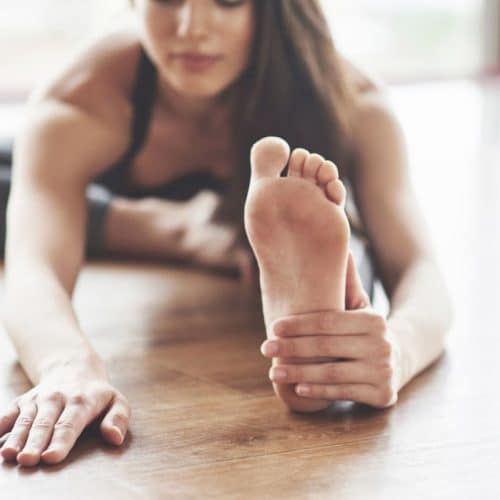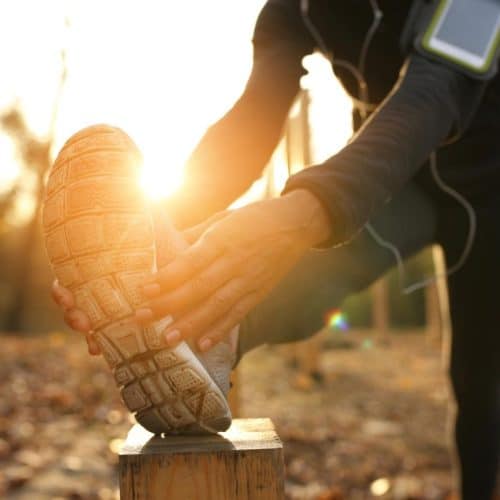Diabetes is a disease that impacts the lives of millions of individuals all over the world. Fewer people are aware of the substantial consequences that it may have on the feet, despite the fact that most are aware of the influence that it has on the levels of blood sugar and the function of the organs.
Podiatrists are an integral part of the process of treating diabetic foot care, which is a vital component of the overall diabetes management process. This article will discuss the significance of podiatry in the treatment of diabetic foot as well as the many different ways in which podiatrists may be of assistance.
Understanding Diabetic Feet
Diabetes, a chronic condition characterised by elevated blood sugar levels, can have widespread impacts on the body, affecting organs, blood vessels, and nerves. One of the areas most susceptible to complications due to diabetes is the feet. Understanding the implications of diabetes on foot health is crucial for preventing severe complications and ensuring overall well-being.
1. Diabetic Neuropathy
Diabetic neuropathy is a form of nerve damage resulting from prolonged high blood sugar levels. It primarily affects the legs and feet, leading to symptoms like numbness, tingling, or burning sensations. The loss of sensation means that individuals might not feel pain, temperature, or trauma, making them more prone to injuries and infections that they may not be aware of.
2. Reduced Blood Flow
Diabetes can lead to peripheral arterial disease (PAD), a condition characterised by reduced blood flow to the limbs. Reduced blood flow can impair the body’s ability to heal, meaning that even minor wounds or injuries can take longer to heal and are more prone to infection.
3. Foot Deformities
Diabetes can cause changes in the musculature and structure of the feet, leading to deformities such as Charcot foot, bunions, and hammertoes. These deformities can create pressure points in the shoes, leading to friction and, subsequently, to ulcers.
4. Skin Changes
Diabetes can cause the skin on the feet to become dry and fragile due to impaired sweat gland function. Cracked skin can serve as an entry point for bacteria, leading to infections.
5. Increased Risk of Infections
The combination of reduced sensation, impaired blood flow, and skin changes significantly increases the risk of foot infections in diabetic individuals. In severe cases, untreated infections can lead to gangrene, which might require amputation to prevent the spread of infection.
6. Importance of Early Detection
Recognising the early signs of foot complications, such as redness, swelling, sores, blisters, or changes in skin colour, is crucial. Early detection and intervention can prevent complications and preserve foot health.
It is crucial for both healthcare practitioners and patients to have a thorough understanding of the complexity of diabetic foot. Diabetes can have a negative influence on foot health, but these risks can be mitigated and managed by taking a holistic strategy.
This approach should include routine foot inspections, immediate response to any changes or abnormalities, and adherence to preventative measures. In order to successfully navigate life with diabetes and ensure that one’s feet remain healthy, it is essential to achieve a good balance in one’s blood sugar levels, to maintain a healthy lifestyle, and to be knowledgeable about the illness.
The Role of a Podiatrist
Podiatrists are medical specialists focusing on foot and ankle health. They play a pivotal role in managing diabetic feet, ensuring that complications are minimised and that patients can maintain mobility and quality of life. Here, we delve deeper into the three critical roles of a podiatrist in managing diabetic feet:
1. Managing Nail and Skin Conditions
- Thorough Assessment: Podiatrists conduct detailed examinations of the feet to identify any abnormalities or conditions that require attention, such as fungal infections, ingrown toenails, or calluses.
- Treatment and Management: They provide treatments like nail trimming, thinning, and debridement of hard skin, preventing the development of ulcers or other complications.
- Ongoing Care: Regular appointments with a podiatrist ensure that any emerging issues are addressed promptly, reducing the risk of severe complications.
2. Debridement
- Removal of Dead Tissue: Debridement is a crucial procedure where podiatrists remove dead, damaged, or infected tissue, promoting faster healing of wounds and preventing the spread of infection.
- Pain Management: This procedure can also alleviate pain and discomfort associated with pressure from hard skin or other foot abnormalities.
- Preventive Measure: Regular debridement can serve as a preventive measure, reducing the risk of more serious complications like ulcers and infections, especially in patients with reduced sensation due to neuropathy.
3. Education and Advice
- Footwear Guidance: Podiatrists educate patients on the importance of appropriate footwear. They provide recommendations on shoes that offer support and cushioning and are properly fitted to avoid pressure points and friction.
- Lifestyle Recommendations: They offer advice on lifestyle modifications, including weight management and exercise, to improve overall foot health and reduce the risk of complications.
- Self-Care Education: Podiatrists instruct patients on daily foot care routines, such as washing, drying, moisturising, and regular self-examinations, empowering them to take charge of their foot health.
In the management of diabetic foot, the function of a podiatrist is diverse and includes examination, treatment, and education responsibilities. Podiatrists play an important role in lowering the risk of diabetic complications and increasing patients’ overall quality of life by treating nail and skin issues, conducting debridement, and educating patients about the need for correct foot care and footwear, as well as offering guidance and education on these topics. It is essential for diabetes patients to meet with their podiatrists on a regular basis and make sure they follow their advice in order to keep their feet in the best possible health.
Additional Key Points
Managing diabetic feet requires a comprehensive approach that combines professional healthcare advice with individual responsibility. Here are expanded insights into these key points that are crucial in managing diabetic feet effectively:
1. Regular Check-ups
- Early Detection: Regular check-ups allow for the early detection of any abnormalities or issues, such as cuts, sores, blisters, or infections, enabling timely intervention and treatment.
- Monitoring Progress: These check-ups also help in monitoring the progress of existing conditions and adjusting treatment plans as necessary.
- Customised Care Plan: Based on individual assessments, podiatrists can develop a customised care plan to address specific needs and risks, ensuring optimal foot health.
2. Self-care
- Daily Inspection: Individuals with diabetes should inspect their feet daily for any signs of injury, redness, swelling, or other abnormalities.
- Proper Hygiene: Maintaining proper foot hygiene, including washing and drying feet daily and keeping nails trimmed and smooth, is essential to prevent infections.
- Moisturisation: Regular moisturisation can prevent dryness and cracking of the skin, reducing the risk of infections.
- Protective Footwear: Wearing protective footwear, even indoors, can prevent injuries and provide support to the feet.
3. Control Blood Sugar Levels
- Prevent Complications: Effectively managing blood sugar levels is crucial to prevent or slow the progression of complications like neuropathy and peripheral arterial disease.
- Regular Monitoring: Regular monitoring of blood glucose levels allows for timely adjustments in medication, diet, and lifestyle to maintain optimal levels.
- Balanced Diet and Exercise: A balanced diet and regular exercise are essential components in controlling blood sugar levels and maintaining overall health.
4. Seek Immediate Attention
- Prompt Intervention: Seeking immediate medical attention for any foot injury, no matter how minor it may seem, is crucial to prevent complications and ensure proper healing.
- Professional Assessment: Even minor injuries require a professional assessment to determine the appropriate treatment and care.
- Avoiding Delays: Delaying treatment can lead to the worsening of conditions, increasing the risk of severe complications like infections and ulcers, which could ultimately lead to amputation in extreme cases.
These key points emphasise the importance of regular professional check-ups, diligent self-care, blood sugar control, and immediate attention to abnormalities or injuries in managing diabetic feet. By adhering to these principles, individuals with diabetes can significantly reduce the risk of severe foot complications and maintain a better quality of life. Balancing professional advice with individual responsibility is pivotal in navigating the challenges posed by diabetes on foot health.
Conclusion
Care for diabetic feet involves not only controlling the condition at hand but also warding off any possible issues that may arise in the future. Patients who take preventative measures and benefit from the knowledge of podiatrists are in a better position to avoid many of the serious foot-related issues that are commonly linked with diabetes. Keep in mind that your feet are what carry you through life, and treat them with the respect they deserve.










